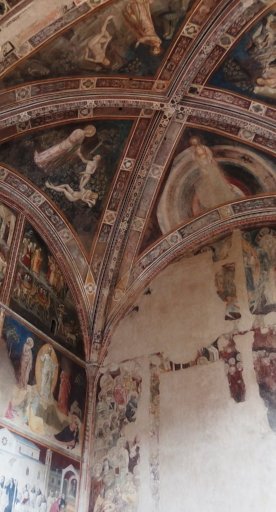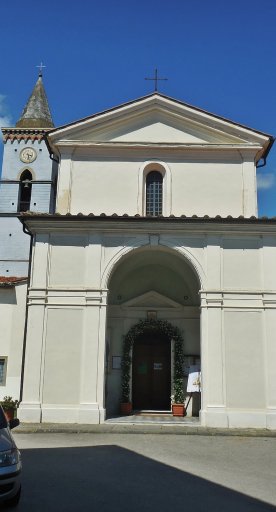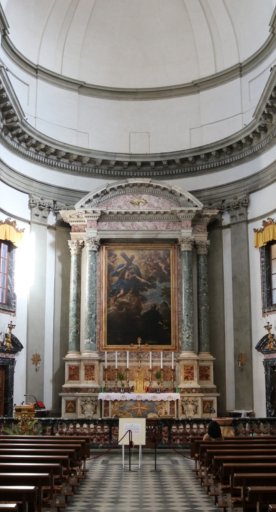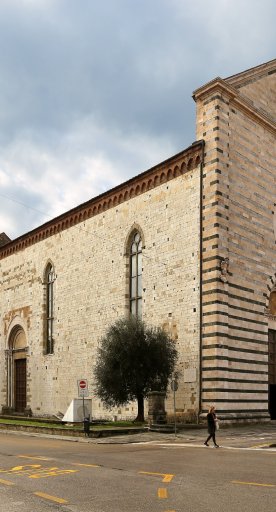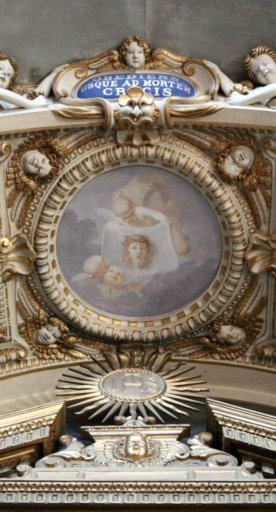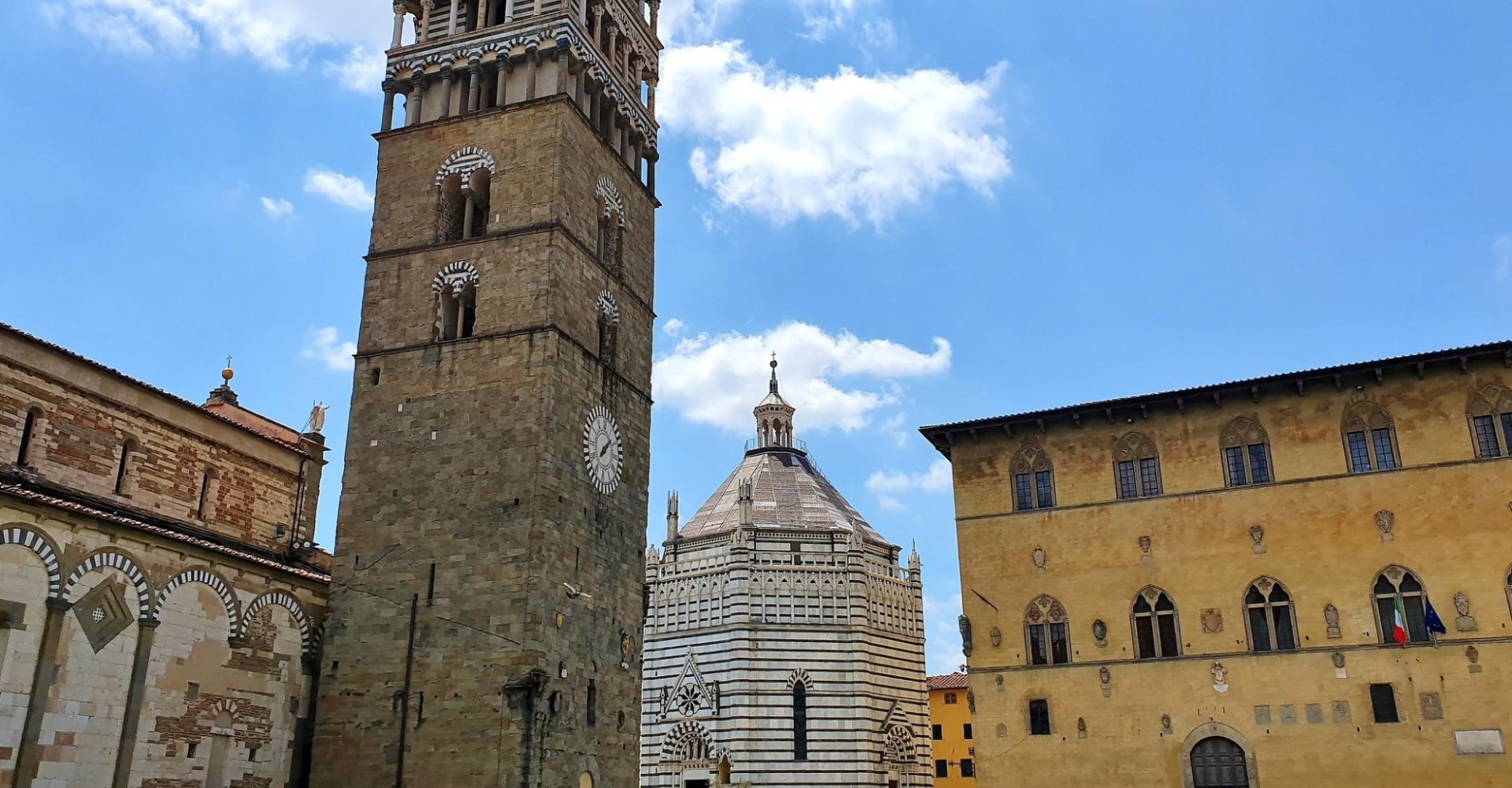
Piazza Duomo in Pistoia
A place that has always represented the historical and architectural heart of the city
The Piazza del Duomo in Pistoia, dominated by the ancient bell tower, is among the most fascinating in Italy: the Cattedrale di San Zeno, the Palazzo dei Vescovi, the Battistero and the Palazzo Comunale all overlook this urban space that has always represented the city's political and religious power. Not far away, the monumental complex of the square is completed by the Torre di Catilina and the Museo di San Salvatore.
Even today the square is the heart of the city life where the most important historical events and the longest-running blues festival in Italy also take place.
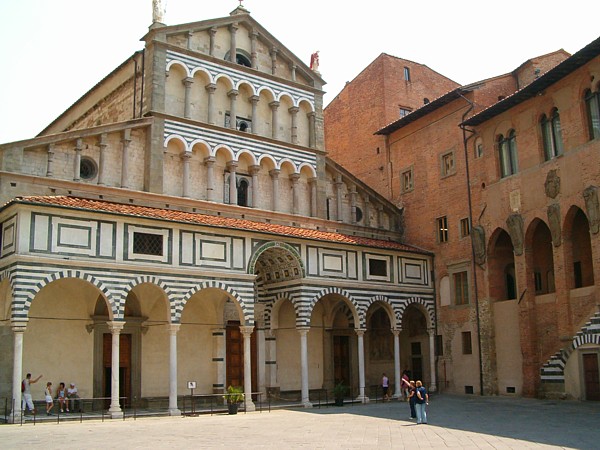
The Cattedrale di San Zeno is the result of constructions and transformations that began in the High Middle Ages and continued in the Romanesque and Gothic periods: a portico was added to the facade in the 14th century, completed in 1505 when Andrea Della Robbia made the glazed archivolt of the central portal and the terracotta lunette with the Madonna col Bambino (Madonna with Child) for the portal below.
Next to the church stands the elegant bell tower, which at 67 meters in height is one of the tallest towers in Italy.
Directly opposite the Cathedral we find one of the finest examples of Tuscan Gothic architecture: the Battistero di San Giovanni in Corte, which combines elements typical of Florence, Pisa, and Siena.
Characterized by green and white marble, it stands over the ruins of the old church of Santa Maria in Corte from which it will take part of its name.
Initially a central plan with the baptismal font in the center, the present octagonal structure was begun in the early 14th century.
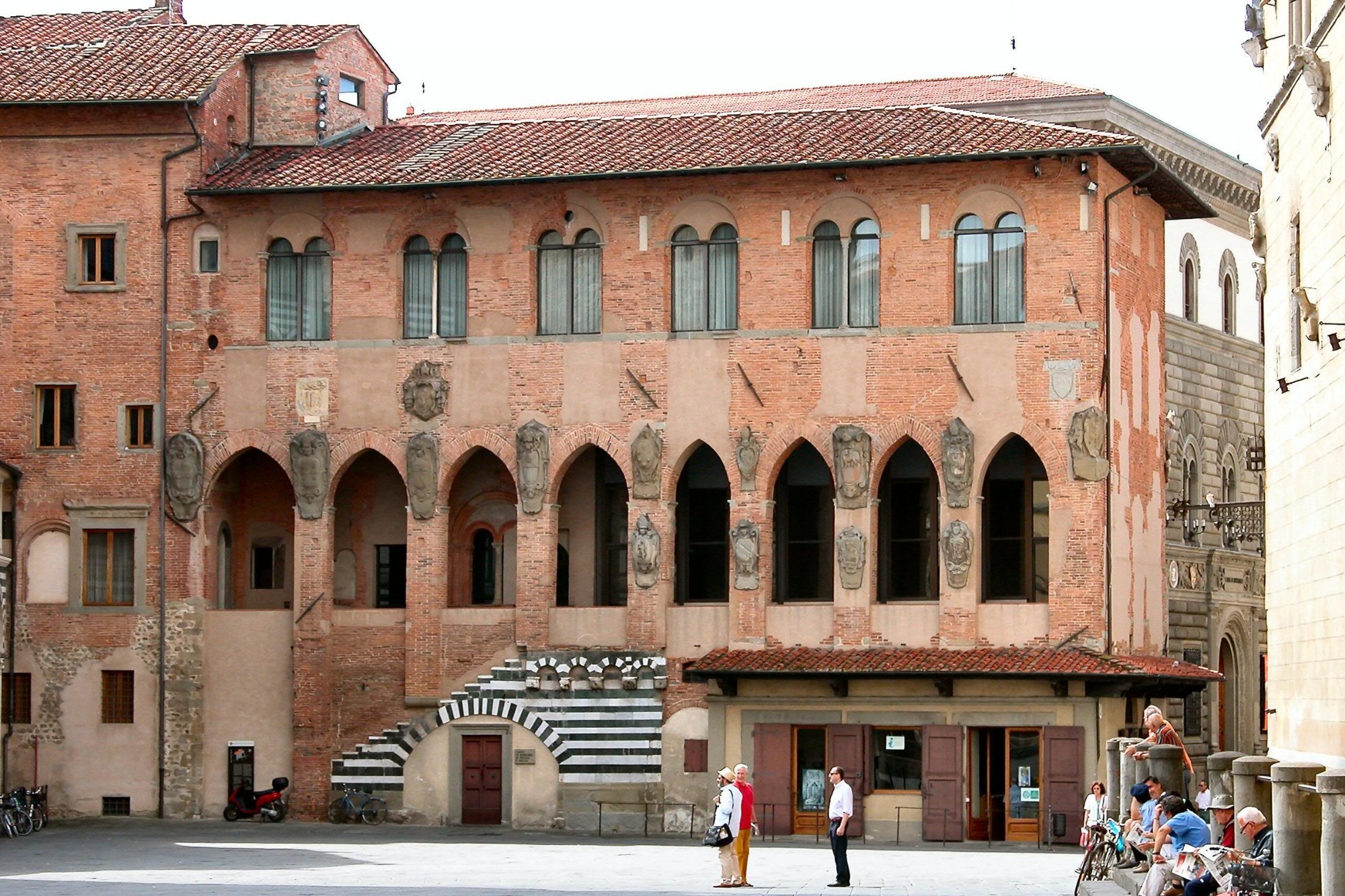
The Palazzo dei Vescovi is an ancient palace attested since 1091. Initially a fortified residence, it acquired the appearance of a stately home in the 12th century.
The museum itinerary – which is undergoing restoration works - includes the collection of sacred furnishings and liturgical garments which took shape over the centuries, the archeological section where you can admire the Etruscan tombstones, the 14th century-frescoes of the Cappella di San Niccolò and a number of modern works such as the Pomona by Marino Marini and a few paintings by Giovanni Boldini.
The Palazzo del Comune, also known as Palazzo di Giano or Palazzo degli Anziani, is one of the symbols of Pistoia. Its construction began in 1294 as the seat of the city government, a function it still maintains today. Inside is the Museo Civico d’Arte Antica, the city's main museum.
The museum exhibits mainly paintings on wood and canvas, some sculptures and objects of applied art, displaying the entire artistic history of Pistoia from the 13th to the 20th century. The Centro di Documentazione Michelucci is part of the museum itinerary.
Opposite the Palazzo Comunale stands the Palazzo Pretorio, the seat of Pistoia's tribunal: built in the 14th century to enlarge the residence of the podestà (name given to certain high officials in many Italian cities beginning in the late Middle Ages), its appearance is the result of a restoration carried out during the 19th century.
Representing one of the key elements that characterize the Piazza del Duomo is the Torre di Catilina, a 9th-century structure built entirely from stone and located at the corner of Via Tomba di Catilina. The name of the tower derives from the legend that the body of Roman politician Lucius Sergius Catilina was buried on the very street where the building stands.
Here, in one of Pistoia's oldest churches is also the Museo di San Salvatore, a cultural and museum space reopened in 2022 after years of closure and lengthy restoration works. It offers a journey through the history of the oldest part of the city displaying the works kept until now in the storerooms of the Musei Civici, as well as more recent discoveries, among which the most extraordinary is surely the incomplete fresco, Compianto sul Cristo morto, datable to the late 13th century and attributed to the circle of Lippo di Benivieni.


